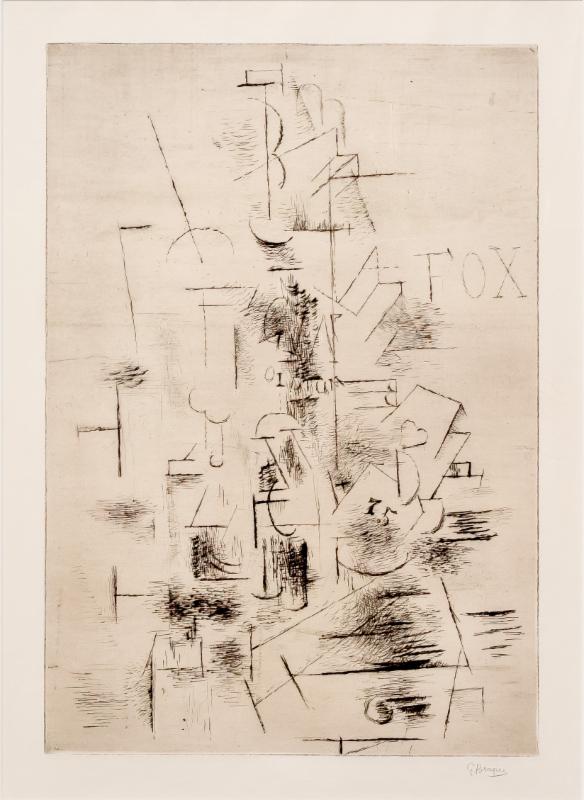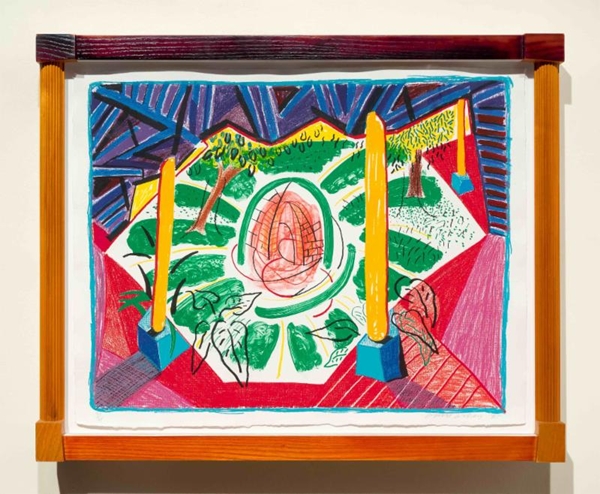"Friday Feature"
Christo, Jim Dine, Marino Marini, Georges Braque, David Hockney, Alex Katz

Leslie Sacks Contemporary
Bergamot Station 2525 Michigan Avenue, B6 Santa Monica, California 90404T: (310) 264-0640 F: (310) 264-0740 e-mail:


1 > 31 October, 2017
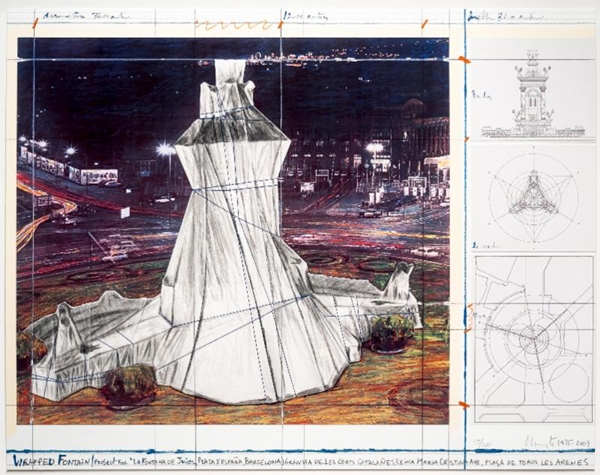
Christo,Wrapped Fountain, 2009, lithograph with collage, 22 x 28 inches, edition of 200, signed and numbered
Christo's temporary works of art sweep through the landscape like a storm and blow over just as quickly, leaving no trace on the scene they so imaginatively transformed. They survive only in memory, in photographs, in books, in films, and perhaps most evocatively in the artist's own prints. Valley Curtain, Running Fence, Surrounded Islands, and many others have been vividly captured in his distinctive hand, providing lasting documents of ephemeral experiences...The objects and prints are enormously diverse, as are the techniques and media employed. Yet rather than reflecting a concern for graphic innovation, this diversity arises directly from the process of planning, developing and realizing the projects. The activity of drawing and collage is a preparatory one with Christo. The designs he makes at this phase anticipate realization, representing imaginative projections of something that must first come to being. Yet they are not merely beautiful visions. On closer examination, we notice that these drawings, like architectural renderings or engineering sketches, contain much information about technical details. This sets them apart from utopian designs. In preparing a project Christo makes sketches and pastes in the actual materials he plans to employ. He makes frequent use of topographic photographs, adding elements of drawing and collage, using the photograph as a background for his draftsmanship.
- Jörg Schellmann and Joséphine Benecke, Editors, Christo: Prints and Objects
Edition Schellmann, Munich, Abbeville Press, New York, 1988, page 10
View additional works by Christo- Jörg Schellmann and Joséphine Benecke, Editors, Christo: Prints and Objects
Edition Schellmann, Munich, Abbeville Press, New York, 1988, page 10

Christo

Jim Dine, Russian Poetess, from Eight Sheets from an Undefined Novel, 1976 Etching with hand-coloring, 41 3/4 x 31 inches, edition of 30, signed and numbered
The prints in the Eight Sheets from an Undefined Novel series were all based on lengthy and elaborate preparatory drawings. I took a group of drawings I had been working on an decided to put them together in a series of prints. The Russian Poetess was actually inspired by a photograph of a head. The drawing was changed a lot as I reworked it many times. The woman, Akhmatova, was a Russian poetess, a friend of Mayakovsky's, I think. I just liked her face. She had a tremendous hooked nose which I liked very much.
Prints look different than drawings. Look at the drawing and print of the Russian Poetess...the prints have qualities that are totally unique. I love to make prints. I have made them all my life. I like the medium. It's not that I necessarily want a more democratic art for all people, it's just that I like printmaking. Making prints is as important to me now as making drawings or paintings. As a matter of fact, it was the only medium, in which, up until just recently, I felt free enough to be figurative when the pressure was still on to make those field paintings with the tools hung on them. Probably because the process was one step removed from me (with the printer in between), that I felt I could start to do that. I'm not exactly sure why I did it, but making prints was the first place my interest in figurative art raised its head.
--Jim Dine and Thomas Krens, Jim Dine Prints 1970-1977: Conversations with Jim Dine
Williams College, Thames and Hudson, Ltd., London, 1977, pages 31-32
View additional works by Jim DinePrints look different than drawings. Look at the drawing and print of the Russian Poetess...the prints have qualities that are totally unique. I love to make prints. I have made them all my life. I like the medium. It's not that I necessarily want a more democratic art for all people, it's just that I like printmaking. Making prints is as important to me now as making drawings or paintings. As a matter of fact, it was the only medium, in which, up until just recently, I felt free enough to be figurative when the pressure was still on to make those field paintings with the tools hung on them. Probably because the process was one step removed from me (with the printer in between), that I felt I could start to do that. I'm not exactly sure why I did it, but making prints was the first place my interest in figurative art raised its head.
--Jim Dine and Thomas Krens, Jim Dine Prints 1970-1977: Conversations with Jim Dine
Williams College, Thames and Hudson, Ltd., London, 1977, pages 31-32

Jim Dine
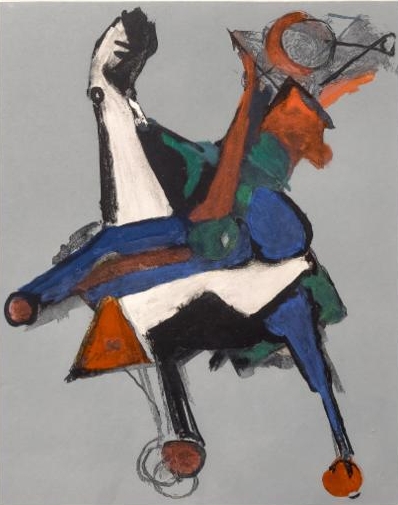
Marino Marini, Marino, from Shakespeare I, Plate II, 1977 Etching, drypoint and aquatint, 30 x 24 1/4 inches Edition of 75, signed and numbered
Marino's work has an elemental simplicity and has almost been limited to three themes: the female figure, the rider and horse and dancers and jugglers. All these are symbolic, imbued with meaning and significance drawn from his own mythology. His typical female figure, the Pomona, Roman goddess of fruit and trees and hence a symbol of fertility, is the archetypal Mother Goddess. The rider and horse is a symbol equally universal and is often interpreted as man riding and controlling his instincts, the horse being the symbol of the animal component in man, specifically the erotic instincts.
--Leslie J. Sacks & Michael Rakusin, Homage to Marino Marini, Marino Marini
Catalogue Raisonné of the Graphic Works (Engravings and Lithographs), 1919-1980
Giorgio and Guido Gustalla, Leslie J. Sacks Editions, Graphis Arte Editions, Livorno, Italy, 1993, page 8 View additional works by Marino Marini

Marino Marini
--Leslie J. Sacks & Michael Rakusin, Homage to Marino Marini, Marino Marini
Catalogue Raisonné of the Graphic Works (Engravings and Lithographs), 1919-1980
Giorgio and Guido Gustalla, Leslie J. Sacks Editions, Graphis Arte Editions, Livorno, Italy, 1993, page 8 View additional works by Marino Marini

Marino Marini
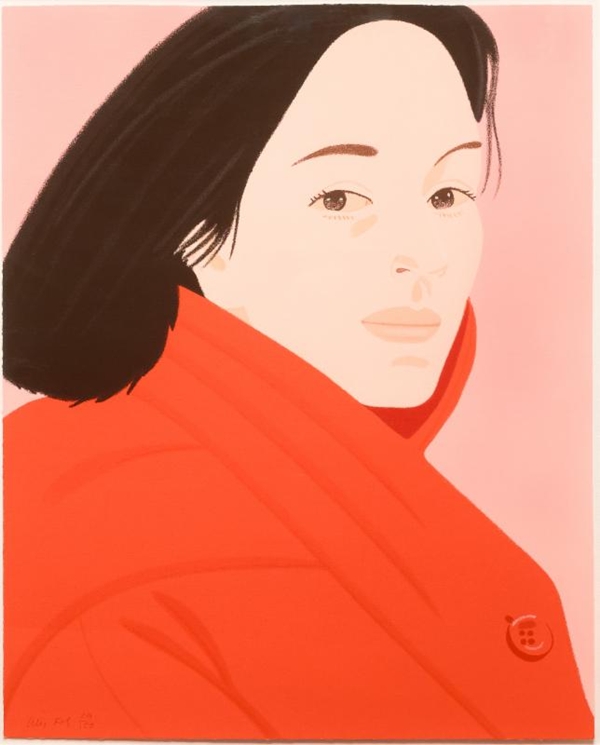
Alex Katz, Brisk Day II, 1990, lithograph, 36 x 29 inches Edition of 150, signed and numbered
Alex Katz has been making prints since the late 1940s. His subjects have always been familiar to him--from friends and family (his wife, Ada, and children, Vincent and Vivien) to the shores and landscapes of Maine. For decades he has stayed with a cast of accessible characters and motifs finding comfort with his intimate knowledge of the people and places that surround him. There is something to be said for knowing a subject so well, that it allows an artist to delve beyond simply rendering it for what it is. In Katz's case it affords him the freedom to experiment with compositional ideas of color, form and perspective, but also to explore the boundaries and possibilities of the medium itself. The lithograph Brisk Day II, 1990 is one of three in a series of the same title. It's a unique project in that all three compositions are exactly the same, and yet different. Katz sought to produce the same base image in three iterations, each being executed through differing printmaking processes--lithograph, etching and woodcut. It's a compelling insight into the disparities that result from one medium to the other. The distinctions are apparent throughout in the line quality in Ada's hair, eyebrows and lashes, the range of saturation of the inks in her lips, hair and coat. As a print nerd, I relish in this idea of the medium being the true subject of the work. Ada herself merely serves as a vehicle through which Katz can push and pull and play--an idea that truly embodies the spirit of printmaking.
-Temma Nanas, Managing Director
View additional works by Alex Katz-Temma Nanas, Managing Director

Alex Katz








